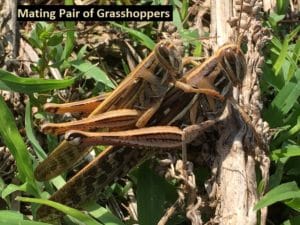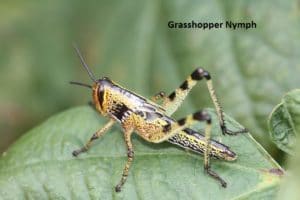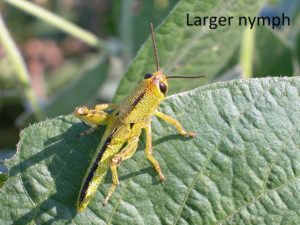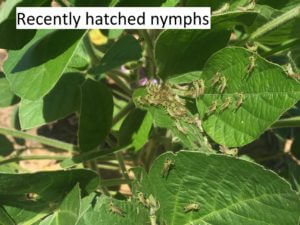 Grasshoppers are an occasional pest of corn in Tennessee. Nymphs and adults can feed on corn at any stage, but are not typically observed until the silking stage and later. Infestations often begin and are usually worse along field margins. Grasshoppers may injure corn by feeding on the leaves, silks, and ear tips.
Grasshoppers are an occasional pest of corn in Tennessee. Nymphs and adults can feed on corn at any stage, but are not typically observed until the silking stage and later. Infestations often begin and are usually worse along field margins. Grasshoppers may injure corn by feeding on the leaves, silks, and ear tips.
Sampling: During the whorl stage and later, corn fields should be checked at least weekly until the crop is mature to determine the presence of insect pests or their damage. Walk in a U-shaped pattern over the field. Sample 10 plants in 10 locations on a weekly basis, but fewer plants can often be checked depending upon pest density.
Treatment Thresholds: Treatment is rarely needed, and thresholds have not been established in Tennessee.
Management options
| Insecticide (Trade Names) for GRASSHOPPERS | Lb Active Ingredient per Acre | Amount Formulation per Acre | Performance Rating |
| bifenthrin (Brigade 2E, Discipline 2E, Fanfare 2E) | 0.047 - 0.1 | 3 - 6.4 oz | 8 |
| esfenvalerate (Asana XL 0.66E) | 0.03 - 0.05 | 5.8 - 9.6 oz | 7 |
| β-cyfluthrin (Baythroid XL 1) | 0.016 - 0.022 | 2.1 - 2.8 oz | 8 |
| γ-cyhalothrin (Declare 1.25) | 0.01 - 0.015 | 1.02 - 1.54 oz | 8 |
| λ-cyhalothrin (Warrior II) | 0.02 - 0.03 | 1.28 - 1.92 oz | 8 |
| Z-cypermethrin (Mustang Maxx 0.8E) | 0.017 - 0.025 | 2.75 - 4 oz | 8 |



